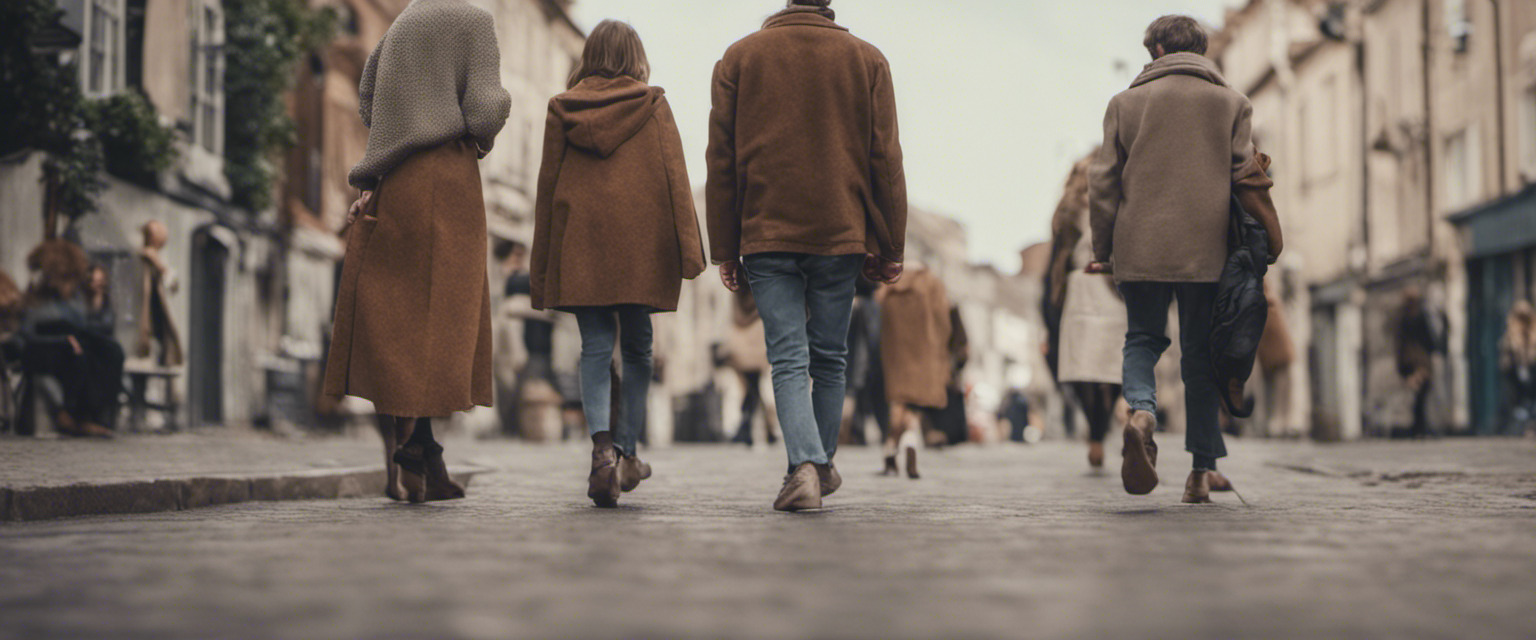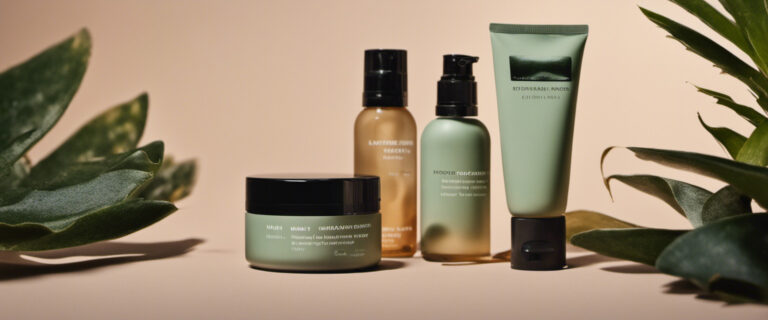Green Threads: Sustainable Fashion Choices for the Conscious Shopper
Introduction
In a world teeming with catwalks and ever-changing seasonal trends, the global fashion industry stands as one of the most influential and vast sectors. However, with its glitz and glamour comes a not-so-stylish environmental footprint. Mountains of textile waste, staggering water usage, and carbon emissions shadow the aisles of fast-fashion outlets worldwide. But change is in the air. A revolution led by conscious consumers is on the rise, championing sustainable fashion choices over fleeting trends. As the tides turn, the narrative shifts from thoughtless consumption to a purposeful and eco-friendly approach to fashion. Welcome to the era of ‘Green Threads’, where style meets sustainability.

The Downfall of Fast Fashion
It’s easy to be lured by the siren song of fast fashion: the allure of the latest styles, available at shockingly low prices, delivered at breakneck speed to our eager wardrobes. But beneath the surface of these glossy advertisements and catchy sales pitches lies a darker tale. Fast fashion’s underbelly is riddled with environmental and ethical dilemmas.
Mass-produced clothing, more often than not, follows a linear model: produce quickly, sell cheaply, and discard ruthlessly. This cycle gives birth to an exorbitant amount of waste, as garments designed for short lifespans end up cluttering our landfills. Moreover, the production of these disposable outfits guzzles immense amounts of water. For instance, crafting a single pair of jeans can consume up to 10,000 liters of water – that’s more than what an average person drinks in a decade!
But the costs aren’t just environmental. The carbon footprint of fast fashion is astonishing. From manufacturing to transportation, the industry emits a staggering amount of greenhouse gases, rivaling that of international flights and shipping combined. This rapid, unchecked production not only pollutes our planet but often sidelines workers’ rights and ethical considerations in the race for cheaper costs.
In understanding the hefty price our planet and its inhabitants pay for cheap fashion, we can begin to reassess our own buying habits and make choices that favor sustainability over disposability.
The Green Revolution: Thrift Shopping
In a world increasingly aware of its ecological footprint, thrift shopping emerges as a beacon of sustainability. Swapping the fast-paced treadmill of consumerism for the treasure hunt of second-hand stores has proven not only environmentally sound but also deeply rewarding on a personal level.
When you dive into the realm of thrift shopping, you aren’t just buying clothes; you’re giving them a second lease on life. Each pre-loved item rescued from a thrift store shelf represents one less garment in our overflowing landfills. These second-hand purchases substantially reduce demand for new clothing production, cutting down on waste, water use, and carbon emissions associated with the fashion industry.
But the beauty of thrift shopping extends beyond its eco-friendly appeal. There’s a certain magic in sifting through racks and discovering unique, one-of-a-kind pieces that have stories of their own. It’s about the thrill of the hunt, the excitement of unearthing that perfect vintage tee or retro jacket, items that often have more character and history than anything bought off a new store rack.
Plus, there’s an undeniable satisfaction in knowing your choices are contributing to a larger movement. By choosing thrift, you’re not just making a fashion statement—you’re championing a cause, advocating for the planet, and celebrating the joy of sustainable discovery.

Upcycling: Breathing New Life into Old Clothes
In an era where sustainability is no longer just a buzzword, but a vital call to action, upcycling stands at the forefront of eco-friendly fashion. But what exactly is upcycling? It’s the art of taking something old or unused and transforming it into something fresh, stylish, and new. Rather than discarding worn-out or out-of-style garments, upcycling encourages us to reimagine their potential, turning them into updated masterpieces.
The surge in upcycling’s popularity isn’t just due to its eco-friendliness, though that’s a significant factor. It’s also about creativity, self-expression, and the satisfaction of breathing new life into something otherwise overlooked. Whether it’s turning an oversized shirt into a chic off-shoulder top, embellishing jeans with creative patches, or converting a frumpy dress into a stylish two-piece set, the possibilities are endless.
Across the globe, countless success stories highlight the transformative power of upcycling. There are instances of old curtains fashioned into elegant dresses, or old sweaters skillfully turned into cozy winter scarves and mittens. These tales of transformation are not only inspirational but are also a testament to the limitless bounds of human creativity when channeled in the right direction.
The beauty of upcycling lies in its dual impact: it not only reduces waste by salvaging materials but also allows for a personal connection with our clothing. Every stitch, every modification, tells a story of innovation and eco-awareness, proving that style and sustainability can, indeed, go hand in hand.
Quality Over Quantity: The Ethical Fabric Choices
A sustainable wardrobe isn’t just about how clothes are recycled or repurposed, but also about what they’re originally made of. Over recent years, there’s been a noticeable pivot towards fabrics that are not only soft to the touch but gentle on our planet. Organic cotton, Tencel, and hemp stand out as the champions of this eco-friendly movement, leading the way in the shift towards conscious fashion choices.
Organic cotton, grown without harmful pesticides or synthetic fertilizers, offers a softer, cleaner alternative to its conventionally grown counterpart. Wearing it, you’re draped in nature’s purity, free from the shadows of chemicals that can harm both the environment and those cultivating the crop.
Tencel, derived from the wood pulp of trees like eucalyptus, spruce, and beech, shines with its silky smoothness and moisture-absorbing properties. Beyond its luxurious feel, its production requires less energy and water than other fabrics, emphasizing its environmental edge.
Hemp, often deemed the ‘miracle fabric’, has a history that dates back thousands of years. It’s incredibly durable, resistant to ultraviolet light and mold, and is one of the most eco-friendly fabrics available. Growing hemp enriches the soil and even reduces pests without chemicals, showcasing nature’s brilliance at its best.
Investing in clothing made from these sustainable fabrics not only ensures that you’re wearing pieces that last longer but also ones that tread lightly on our Earth. It’s a choice that embraces quality over the fleeting charm of quantity, signaling to the world that as consumers, we’re ready to prioritize the health of our planet over fast, disposable fashion.

Celebrating Eco-Champions: Sustainable Brands to Watch
In a world awash with fast fashion temptations, a few courageous brands are rising to the occasion, setting benchmarks for the industry with their sustainable practices and eco-friendly ethos. These brands aren’t just fashion labels; they’re pioneers leading the charge in the green fashion revolution, proving that style and sustainability can harmoniously coexist.
Brands like Patagonia have long championed eco-responsible production, using recycled materials and ensuring fair labor practices. Their commitment isn’t just a marketing ploy; it’s a deeply ingrained philosophy that resonates with every stitch and seam.
Emerging brands like Reformation and Everlane are breaking the mold too, with transparent practices that allow shoppers to see the environmental footprint of each item. They’re turning the traditional shopping experience on its head, offering a deeper connection to the clothes we wear and the stories behind them.
Materials also play a pivotal role in a brand’s sustainability credentials. Brands like Eileen Fisher and Alternative Apparel extensively use organic cotton, Tencel, and hemp in their collections, redefining luxury with nature at its core.
But it’s not just about the big names. A myriad of small-scale, local artisans and designers are weaving sustainability into their craft, bringing forward unique, handcrafted pieces that tell tales of traditions, cultures, and a genuine love for the planet.
By supporting these sustainable brands, consumers are casting a vote for the kind of world they want to live in – one where fashion thrives, but not at the expense of our environment. It’s a shift from mindless consumption to mindful selection, where every purchase becomes a statement of purpose and positive change.

Sustainable Fabrics: Choices that Matter
In the labyrinth of modern fashion, not all fabrics are created equal. As consumers grow more conscious, the spotlight shifts towards materials that are both gentle on the planet and our skin. Sustainable fabrics are not just a trendy buzzword; they’re a nod to harmonizing our style choices with Earth’s well-being.
Organic Cotton is leading the charge, grown without harmful pesticides and using less water than its conventional counterpart. It’s soft, durable, and a guilt-free choice for those breezy summer dresses or snug winter sweaters.
Venturing further, we encounter Tencel or Lyocell, a biodegradable fabric derived from the wood pulp of trees like eucalyptus and spruce. With its silky smooth finish, it’s no wonder that Tencel is hailed as the eco-friendly cousin of synthetic fabrics.
Hemp, though often associated with its psychoactive cousin, is a powerhouse in the sustainable fashion world. Resilient, anti-microbial, and requiring minimal pesticides, hemp-based fabrics are making a resurgence, carving a niche in both casual wear and high-fashion circles.
Choosing clothes made of these fabrics is more than a fashion statement; it’s a pledge. A pledge to prioritize the environment and to rally behind brands that do the same. So next time you’re out shopping, spare a glance for the label. It’s a small step, but one that stitches the fabric of a more sustainable future.

DIY Magic: Reviving Old Clothes with a Personal Touch
In an era where disposable fashion reigns supreme, taking a moment to breathe life into old garments is not just sustainable, it’s deeply personal. DIY or ‘Do It Yourself’ is not merely about fixing a tear or replacing a button; it’s about transforming what’s old into something fresh, unique, and intrinsically you.
Ever noticed that faded jean jacket hanging at the back of your closet? Imagine it reborn with vibrant fabric patches, or perhaps some hand-stitched embroidery. Those worn-out sneakers? A splash of fabric paint or some creative doodling can make them concert-ready!
The beauty of DIY lies in its unlimited possibilities. From converting old t-shirts into trendy tote bags to transforming outdated skirts into chic cushion covers, the sky’s the limit. Platforms like Pinterest and YouTube are brimming with tutorials for those new to the DIY scene, offering step-by-step guides to mastering the art of upcycling.
But beyond the craft and creativity, there’s a more profound message here. By choosing to revive and reimagine, we’re reducing our ecological footprint, embracing slow fashion, and curating a wardrobe that tells our unique story. It’s fashion that respects our planet while celebrating our individuality.
So, the next time you’re about to discard an old garment, pause and ponder. With a dash of creativity and a sprinkle of inspiration, you might just discover its untapped potential, waiting to shine anew.

Conclusion
As we’ve journeyed through the kaleidoscope of sustainable fashion, one thing becomes abundantly clear: our choices matter. Each garment we buy, each brand we support, and each upcycling venture we embark on leaves an indelible mark on our planet. The importance of making sustainable fashion choices isn’t just a fleeting trend; it’s an urgent call to ensure that our love for style doesn’t eclipse the well-being of our environment.
We all have the power to become conscious shoppers, to champion the cause of green fashion, and to inspire those around us. By understanding the depths of our impact and making intentional decisions, we can be both stylish and eco-responsible. Weaving sustainability into our fashion choices doesn’t mean compromising on style; it means elevating it with purpose and awareness.
Call to Action
Fashion is more than just clothing; it’s a narrative, a movement, a statement. And we’d love to hear yours. Share with us your sustainable fashion hacks, those hidden gem brands that prioritize the Earth, and your heartwarming upcycling stories. Let’s build a community that celebrates green threads and conscious choices.
And if you’re keen on staying in the loop with all things sustainable fashion and eco-lifestyle, do subscribe. Dive into a world where fashion meets sustainability, and let’s tread this green journey together. With every choice, every share, and every subscription, we inch closer to a world where fashion and nature coexist in harmony.







